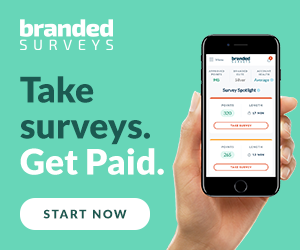Today we’re going to share with you a simple guide to doing a no-spend challenge. “What’s that?” You might ask. A no-spend challenge involves spending nothing for an entire period of time – usually at least seven days. It’s kind of like fasting, but instead of food, you’re putting the brakes on your spending habits.
Check out a recent post which talks about things you should stop buying now if you want to save money. When you start to examine your budget more closely, you’ll see that there are plenty of painless ways to spend less!
But, back to the ‘guide’ part of this post! Many comprehensive articles (and even whole books) teach you how to overhaul your finances by cutting back on your purchases, but we’re going to outline the basics with this simple guide to a no-spend challenge. Here’s how to get started:
1. Choose a Time Frame
First, you need to decide how long you want to do your no-spend challenge. If this is your first time, you might be excited to get started, but you’ll also want to be realistic. You don’t want to set yourself up for failure right out of the gate.
Seven to 14 days is the average length of time most people choose, but it might be easier to set a goal of three to four days, to begin with. If you’re really apprehensive about this challenge, try it for just one day. Then, If you feel encouraged with your success, you can always add more time.
2. List All Your Expenses
Make a list of everything you would normally spend money on in a typical week. This includes your rent or mortgage, groceries, bills, eating out, and general purchases like clothes, makeup, and other essentials.
Write down absolutely everything. The purpose of this step is to determine which categories you will need to exclude from the challenge. For example, if the date your rent is due falls in the middle of your no-spend challenge, that could be problematic. You’re going to need to take care of basic needs such as:
- Housing: This includes your mortgage, property taxes, rent, or emergency expenses—a broken water pipe, for example.
- Food: You’ve got to eat. So you’ll likely need to spend money on food unless you already have a stockpile you can use.
- Vehicle Expenses: If you drive to and from work, you’ll need gas. And if you have insurance or car payments due during your no-spend challenge, you won’t want to skip these.
- Child Care: If you have a child care provider, you can’t just announce that you’re doing a no-spend challenge and expect them to be okay with it. The same goes for any other weekly service where others depend on payment from you.
- Utilities: If you have water, phone, gas, or electric bills due during your no-spend challenge, you’ll still need to take care of these expenses to keep from getting the dreaded shut-off notice.
- Credit Card or Loan Payments: This is another area you can’t really put on hold. It does little good to do a no-spend challenge but not pay your bills on time. The result is interest charges, late fees, and a lowered credit score.
3. Decide What To Eliminate During the Challenge
By now, you’ve probably realized that a no-spend challenge doesn’t mean you forego your financial responsibilities for a certain period of time. Instead, you’ll be eliminating spending from specific categories. Think of these categories as “wants.” Your wants list may look different, but here are a few examples:
Entertainment: Think about movies, concerts, theme parks, festivals, and other events that cost money.
Dining Out: This doesn’t just include take-out food or dinner at a restaurant. Think about that sandwich you grab at lunchtime or your morning latte from Starbucks.
Personal Care: This may include the hair or nail salon, massages, and other services that can wait.
Hobbies: Any hobby that you regularly spend money on can be put on hold for the no-spend challenge.
Clothes: You may need to examine this spending category closely. For example, if snow is in the forecast and you don’t have suitable boots, gloves, or a jacket, you might need to make an exception.
Gifts: Again, this is another category to evaluate carefully. In other words, don’t do your no-spend challenge during the week of your child’s birthday. However, if you regularly buy little gifts for your spouse “just because,” you can probably forego them for a short time.
Cable Services: This is geared more toward those who are doing a longer (one month or more) no-spend challenge. You could decide to suspend or freeze certain streaming services during that time.
Boredom Shopping: If you regularly go shopping “just for fun,” this is a no-brainer. Those trips to the dollar store really do add up.
Vacationing: You can probably postpone that overnite getaway you take every other month. However, you won’t want to plan your no-spend challenge during the week of your annual Florida trip.
Understand that there are no right and wrong spending categories. Instead, you’ll need to decide for yourself what you absolutely must spend money on and the areas where you can commit to the no-spend challenge.
Track Your Progress
Tracking your progress is vital to being successful with your no-spend challenge. You might not be able to see the small victories you have attained otherwise.
There are many ways to keep track of your progress during the challenge. For example, you can use a habit tracker app, a free no-spend challenge printable (there’s lots of them on Pinterest), a bullet journal, or just a simple notebook. (Whatever you do, don’t go out and buy something new to chart your progress as that would offset the whole point).
No matter what method you use, just make sure that you track what you spent money on during your no-spend challenge so you can actually see on paper how much you’ve saved.
A Word About Doing a No-spend Challenge With Kids:
Children love a contest, especially when it becomes a fun family activity. If you have children and you want to implement a no-spend challenge, try to get them involved. Talk openly with your kids about your plans and make sure they understand how they can benefit from this project. You might be surprised at how supportive and cooperative they can be.
Reward Yourself
This part is a little tricky. Naturally, if you’ve had a successful no-spend challenge, you’ll want to celebrate your accomplishments. However, most of us are accustomed to spending money to reward ourselves for a job well done.
You’ll want to be sure that the reward is not frivolous or extravagant, or you’ll undo all your hard work. Some potential ideas include taking a picnic to a scenic (and free) park, having an ice cream sundae party at home, or even baking a cake! The point is that you establish a ritual to end your no-spend challenge and acknowledge your triumphs.
If everything goes according to plan during your first no-spend challenge, you should have saved a little money (plus more if you take paid online surveys). Plus, you’ve likely learned that there are many things you can do without.
Now, you can decide on a date for a more extended no-spend challenge. It may be a bit harder, but it will also be more satisfying and could potentially change your financial picture forever.











